
[ad_1]
A suffix is a letter or group of letters added to the tip of a root phrase, base phrase, or different suffix to change or add which means. Suffix examples are usually taught in phrase examine, each in analyzing the morphology of a phrase and in how you can spell phrases when suffixes are added. As college students find out about suffix examples, their comprehension, vocabulary, spelling skills, fluency, and confidence will enhance.
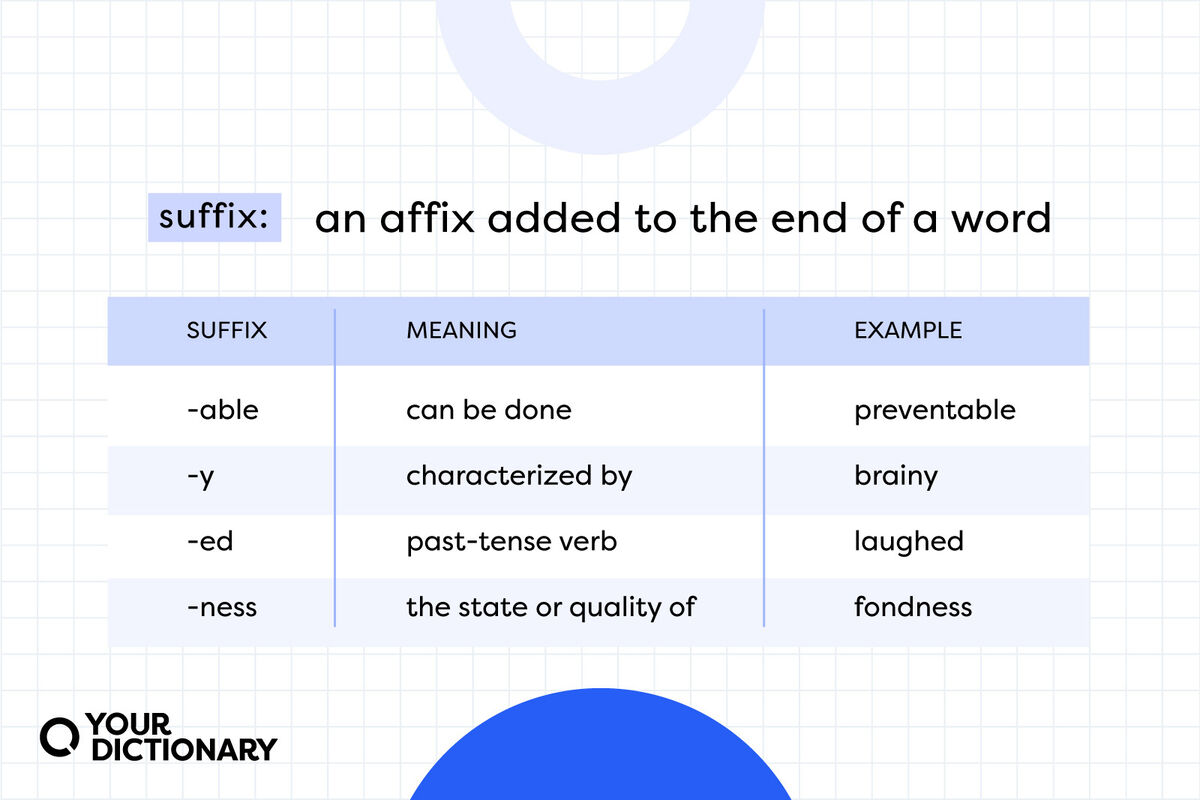
Beneath we discover the formation of phrases, the impact of including suffixes to phrases, and methods to show suffixes.
Morphemes
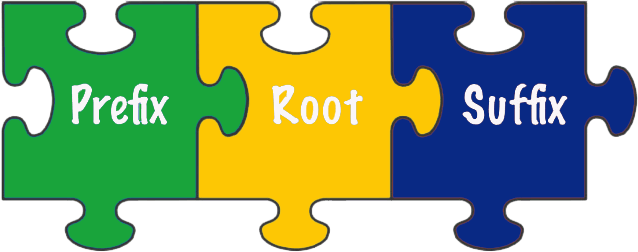
To know suffixes, let’s first begin with how they match into the larger image of morphology. Morphology is the examine of the formation of phrases. Prefixes, suffixes, and root phrases/base phrases are morphemes, the smallest items of which means. For studying, spelling, vocabulary acquisition, and total comprehension, morphemes are essential.
Prefixes are affixes added to the start of root phrases, base phrases, or different prefixes. They usually change the which means of a phrase. For instance, when the prefix un- (not) is hooked up to the bottom phrase variety, the core which means of the phrase adjustments drastically: un + variety = unkind.
Root phrases and base phrases are morphemes that kind the muse of a phrase. Roots are usually of Greek or Latin origin and often can’t stand alone as phrases with which means with out affixes. Base phrases have which means with out affixes.
Suffixes are affixes added to the tip of root phrases, base phrases, or different suffixes. Suffix examples primarily have an effect on the phrase’s a part of speech, tense, or plurality. For instance, the bottom phrase field is a singular noun. By including the noun suffix -es, the brand new phrase turns into plural: field + es = containers.
Phrases might be damaged down into morphemes and reconstructed into new phrases. The addition of affixes to root phrases and base phrases can create a lot of phrases with associated meanings.
Suffixation
Including suffixes to phrases creates selection within the English language. Suffixation is the method wherein phrases are shaped by attaching suffixes.
Listed below are some examples of suffixation:
Leap is a present-tense verb. When the suffix -ed is added, the brand new phrase jumped turns into a past-tense verb: bounce + ed = jumped.
Hazard is a noun. When -ous is added as a suffix, the phrase harmful turns into an adjective: hazard + ous = harmful.
Peace is a noun. When -ful is added, the phrase turns into peaceable, an adjective. The adverb suffix -ly might be additional added to create a phrase with two suffixes: peace + ful + ly = peacefully.
Including suffixes to the tip of a phrase isn’t all the time easy. Suffixation with suffixes that start with vowels typically adjustments the spelling of the basis phrase or base phrase. However regardless if the suffix begins with a vowel or consonant, the suffix spelling won’t ever change.
Widespread Suffixes within the English Language
Regardless that they’re small, suffixes can have a huge effect on phrases. In English, a suffix can point out whether or not a phrase is a noun, verb, adjective, or adverb, essentially the most used suffixes being -s, -ed, –ing, and -es. Beneath is a listing of widespread suffixes and their meanings, categorized by their a part of speech.
Noun Suffixes
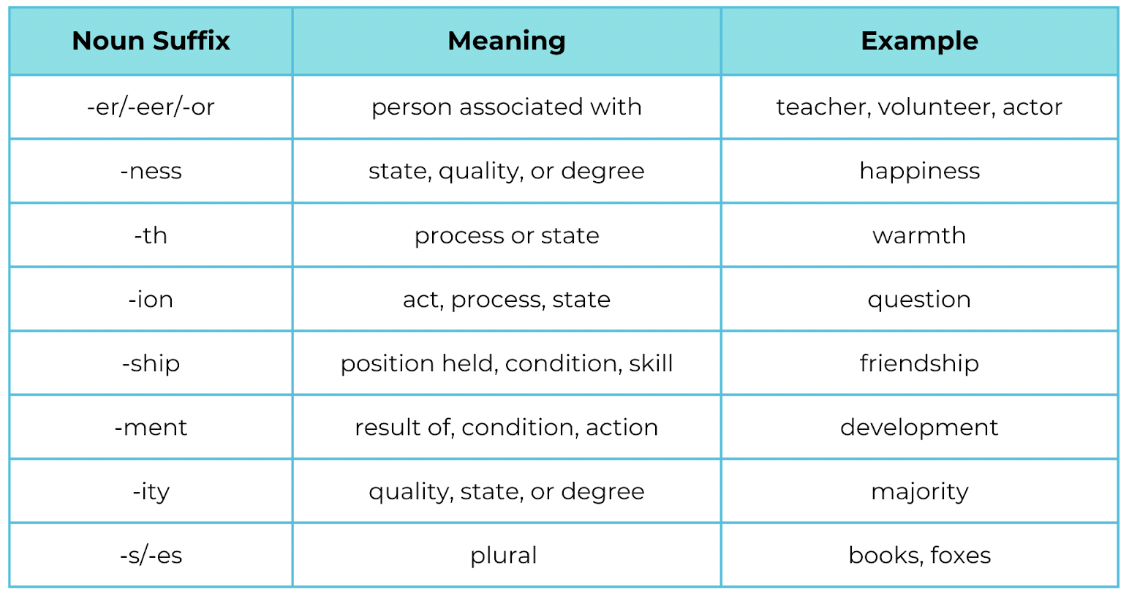
Verb Suffixes
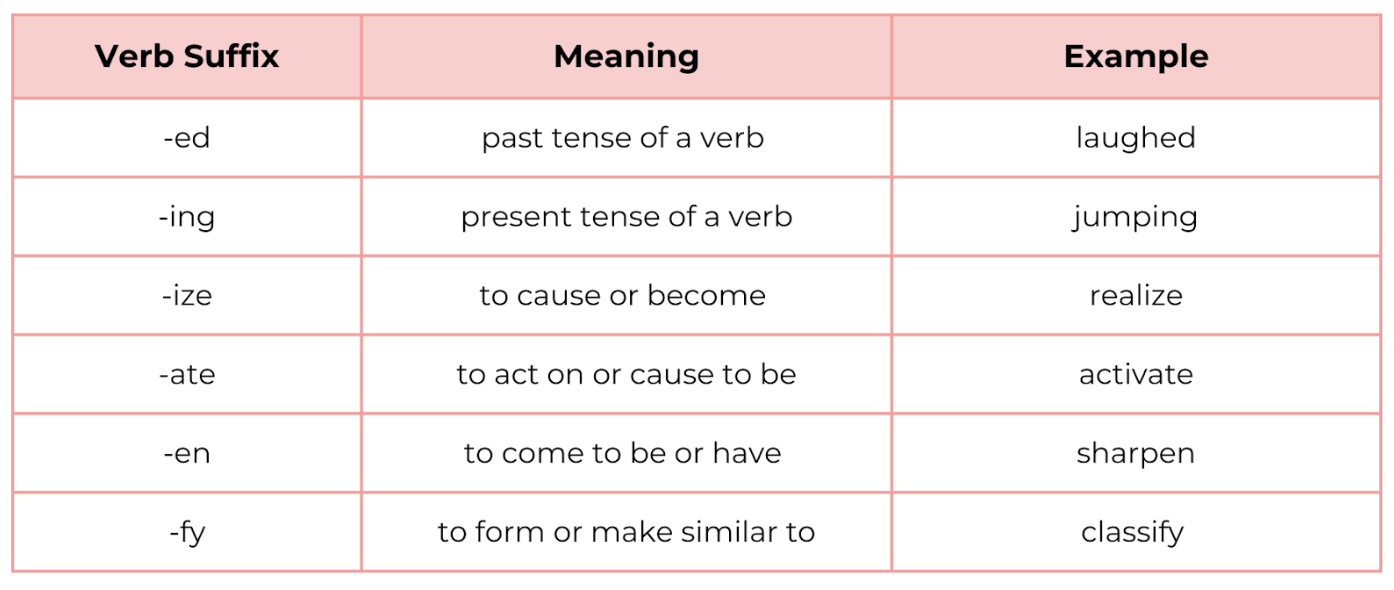
Adjective Suffixes
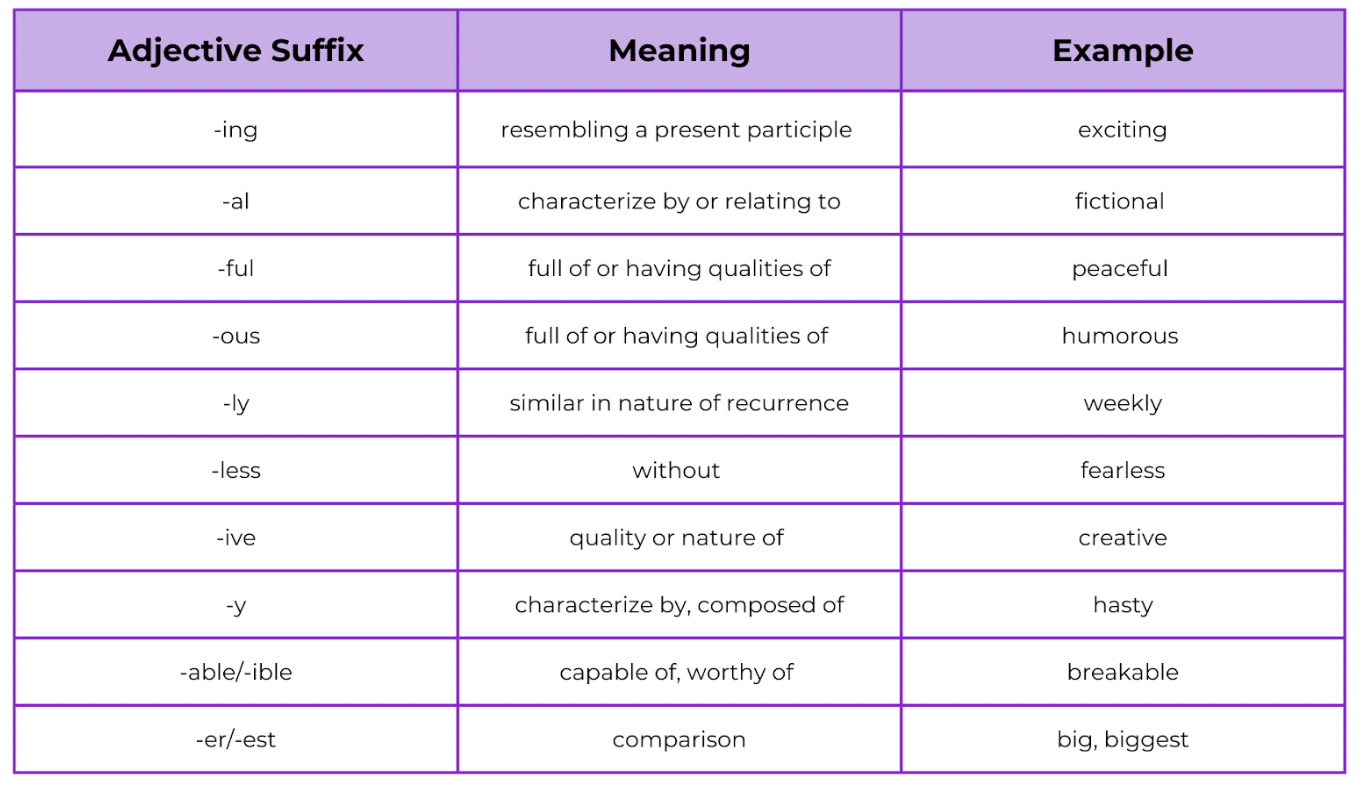
Adverb Suffixes

Concepts for Educating Suffixes
Data of suffixes will help college students perceive the which means of latest phrases they encounter. Utilizing suffixes permits college students to change a phrase’s grammar, so it’s very important for them to study the varied suffixes and how you can use them appropriately. Suffixes also can help college students with spelling, as suffixes change how phrases are spelled. Listed below are some concepts on how you can train suffixes.
Image Books
A good way to introduce or evaluation the idea of suffixes, it doesn’t matter what age you train, is to learn image books. Two books to take a look at are What Is a Suffix by Brian P. Cleary and If You Had been a Suffix by Marcie Aboff.
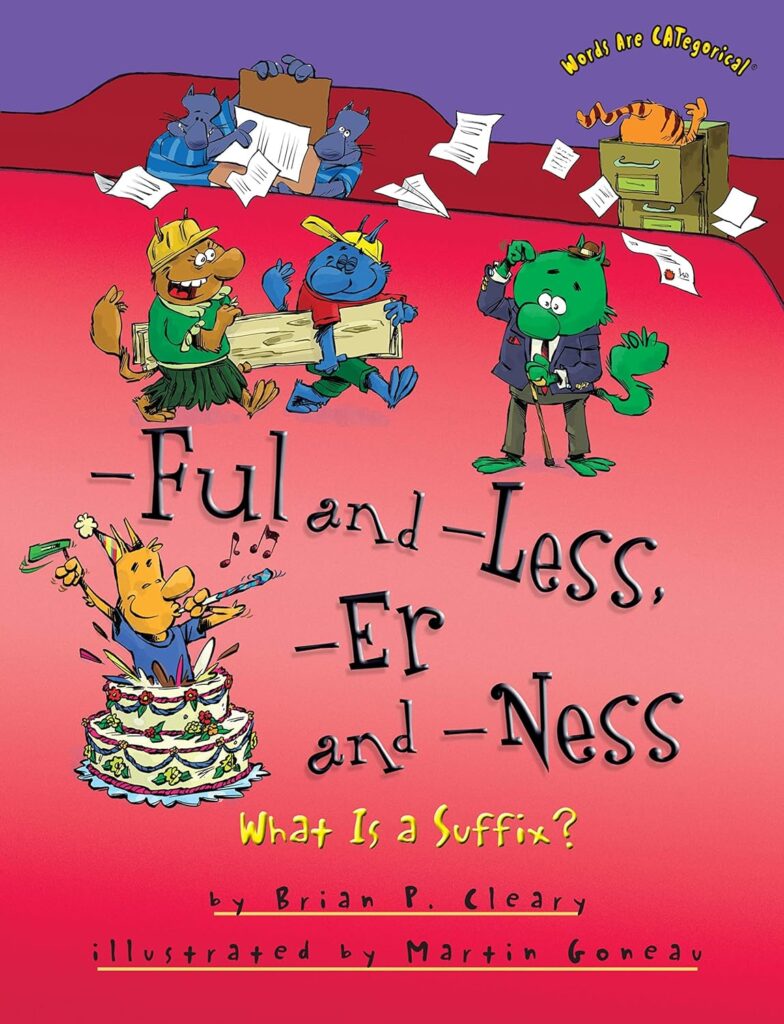
Purchase it: What Is a Suffix? on Amazon
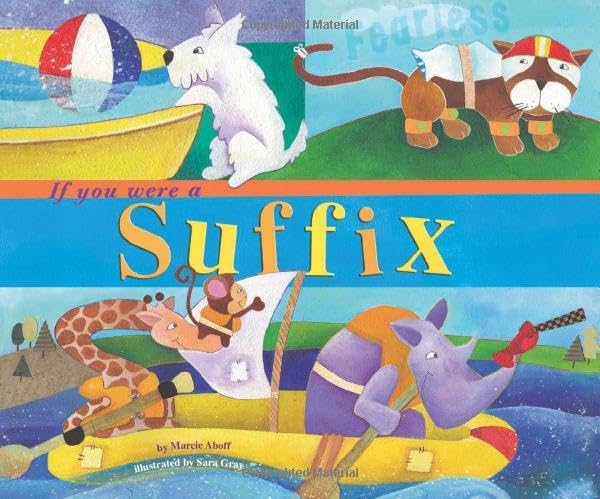
Purchase it: If You Had been a Suffix on Amazon
Educating Suffix Spelling
Suffixes can’t all the time be added with out spelling modifications of the basis or base phrase. Grade College Giggles presents nice concepts for serving to college students spell phrases appropriately when including suffixes.
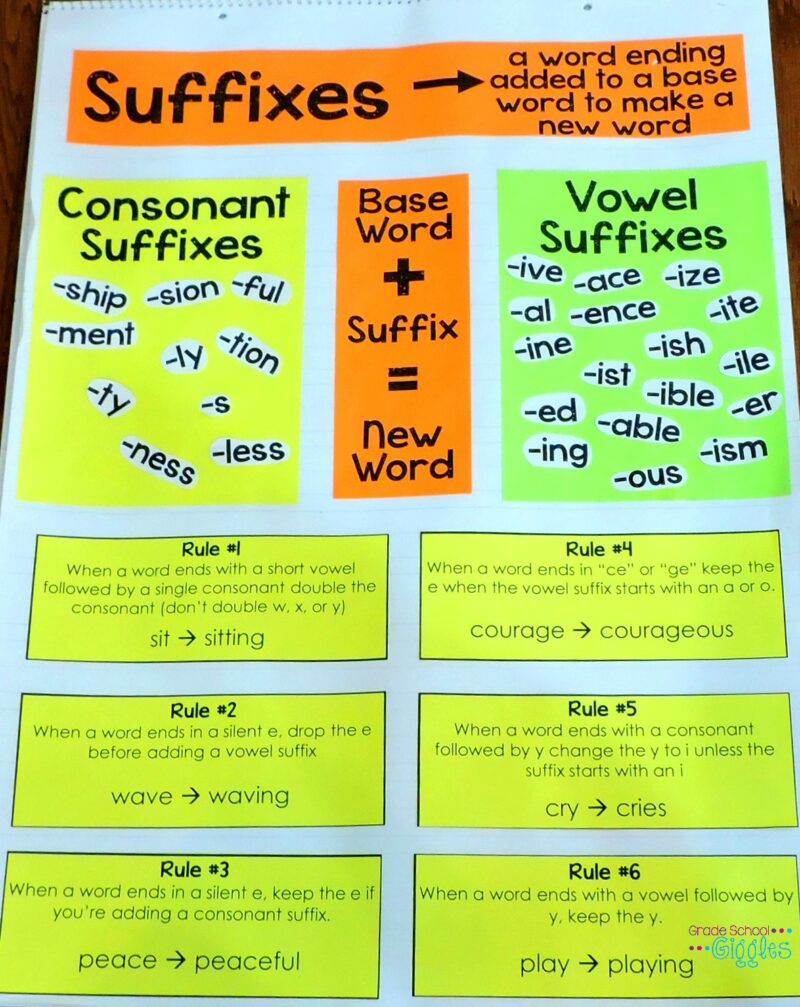
Suffix Puzzles
College students can work collaboratively or individually to finish suffix puzzles.
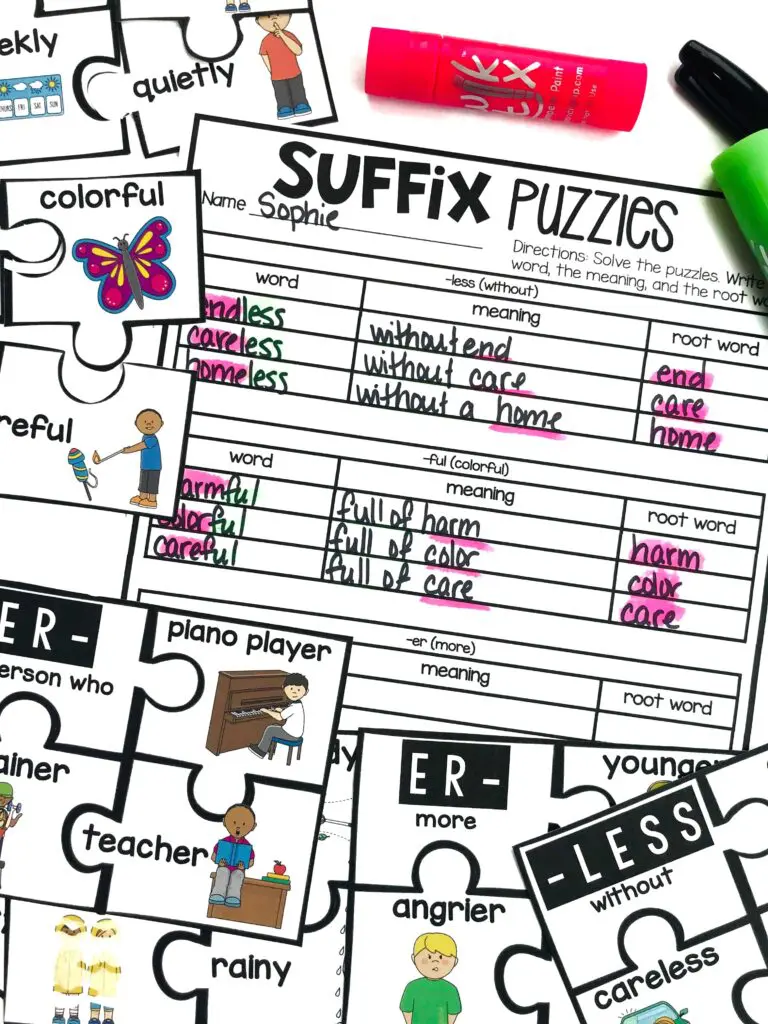
Interactive Anchor Chart
Create anchor charts with colour, visuals, and examples to help college students in understanding and remembering suffixes. Use them as a reference or as an interactive exercise.
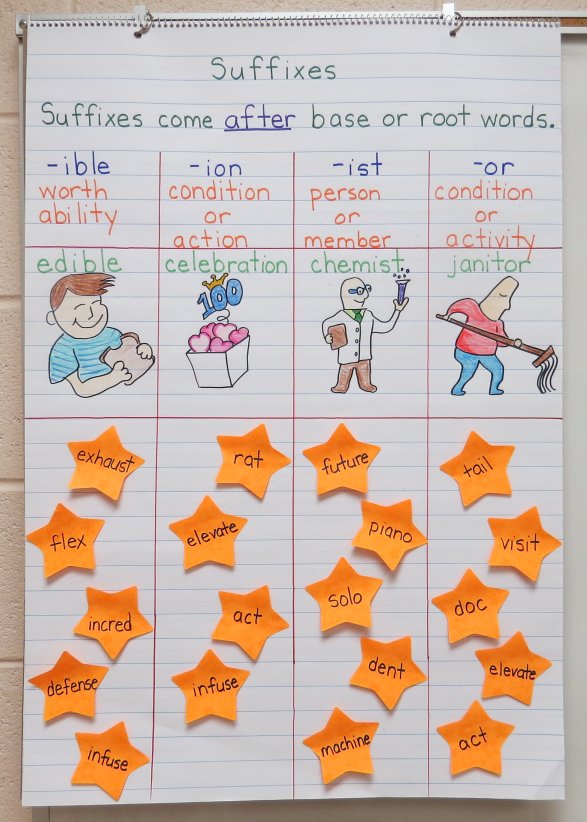
Interactive Notebooks
Utilizing interactive notebooks will help college students manage and synthesize concepts. College students can refer again to it, they usually can add suffixes to it all year long as wanted. Utilizing colour in notes makes them extra artistic and simpler to prepare and visualize info.
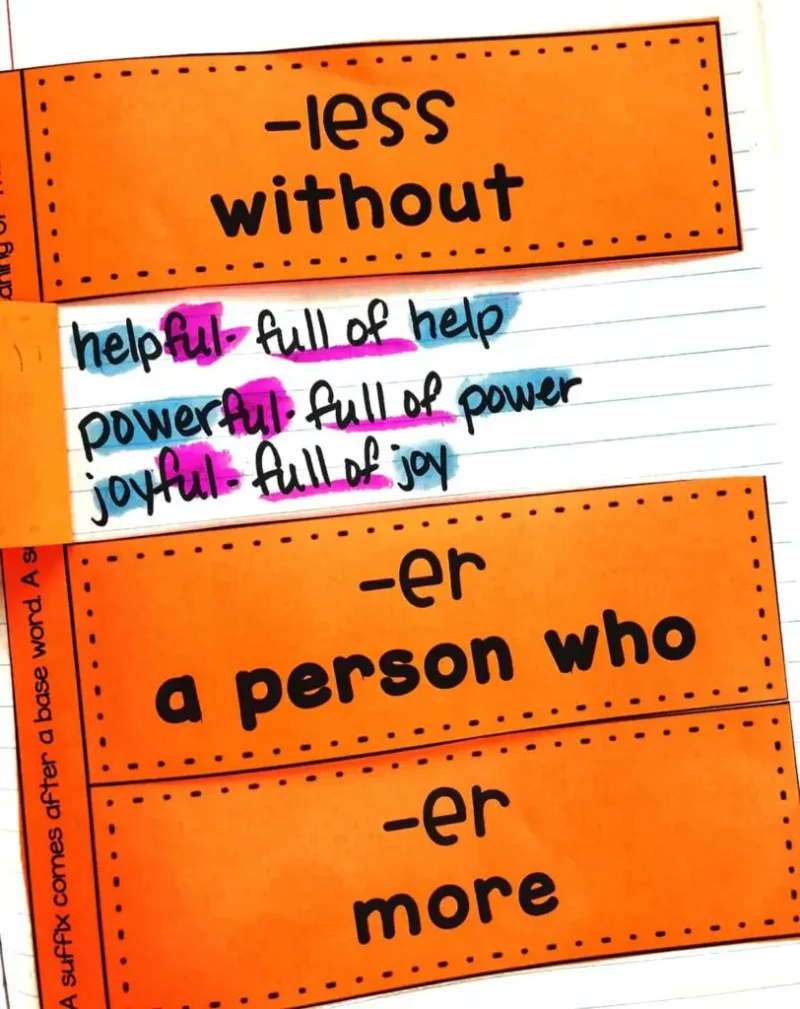
What are your favourite suffix examples and lesson plans? Come share your concepts within the We Are Lecturers HELPLINE group on Fb.
Plus, take a look at How To Educate Spelling With Phrase Inquiry!
[ad_2]